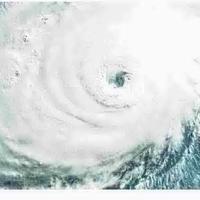Volcanos. Sandstorms. Tsunamis. Hurricanes. Missed cruises. Someone in your travel group breaks a leg. Yes, these events — and myriad others — can disrupt or even cancel a trip. But I get annoyed when I see travel-insurance promotions and even advice writing focus on these contingencies — and especially with stories of how travel insurance “saved” someone’s vacation. Once more: Travel insurance isn’t about fixing the many potential mishaps that can upset your travels. It can’t un-erupt a volcano. It can’t un-inundate a coastal resort. It can’t operate a canceled flight. It can’t un-break a leg. Again base fact: Travel insurance is about money. Money. Not contingencies or events. If your airline loses your baggage, insurance can’t find it — all it can do is help pay for you to buy replacement stuff . If your flight is delayed overnight, it can’t get you a hotel room near the airport; all it can do is pay for a room if you can find one. So when you’re thinking about insurance, your focus should be on possible ways you could lose money. Specifically, it means how much money you have at risk if you should have to disrupt your planned vacation — money that you can’t get back in the way of refunds. And you start with the big-ticket items:
People are also reading…
A one-week vacation rental can cost from less than $1,000 to more than $10,000 depending on the number of rooms, location and season. Typical vacation-rental contracts hold you to very stiff cancellation penalties, typically ranging from 25% if you cancel several months ahead up to no refund at all if you cancel within a month of your rental. That’s the kind of risk most of you can’t take.
Cruises and tour packages
Almost all cruises and package tours must be fully prepaid, leaving you with a risk that can be as great as with a vacation rental. And, as with rentals, cruise-line and tour-operator refund policies are severe, and if you cancel within a month, you may get no refund at all.
Today, many so-called non-refundable airfares are at least possibly re-usable — if you cancel, the airline gives you a credit or voucher toward a future flight. But some are still totally refundable — once paid, use it or lose it.
Travel can require prepayment or guarantee for a bunch of other services — a resort package, guaranteed hotel reservations and such. Again, if you can’t get your money back or avoid a charge, your money is at risk.
These risks — the really big ticket ones — are covered by trip-cancellation and trip-interruption insurance, or TCI/ TII, almost always bundled together. The insurance pays off in the event of a named contingency that befalls you, your family, your travel group or your destination. The cancellation part covers contingencies before your trip starts; the interruption covers contingencies once you’ve begun your trip and pays to get you home.
One other big risk is ultra-expensive medical expenditures not covered by your regular medical insurance. Insurance sellers and some writers are fond of citing cases where somebody had to pay thousands of dollars for a private-jet transfer home from Bongo-Bongo. If you’re traveling to exotic places, you need to consider travel medical insurance that covers this sort of expense.
Insurance sellers and writers are also fond of praising insurance such as baggage insurance that “saved” a vacation because it paid for $500 worth of new clothes when your airline lost your baggage. To me, this is the chump-change kind of insurance — paying out money you could afford yourself. Yes, it’s nice to get repaid, but these expenses are not in big-risk territory.
Again, when you look at insurance, look first at your exposure for big losses or non-recoverables, not the many catastrophes that might await. And forget the small stuff — your credit card may even cover you, anyhow.
Email Ed Perkins at eperkins@mind.net. Also, check out Ed’s new rail travel website at www.rail-guru.com.





